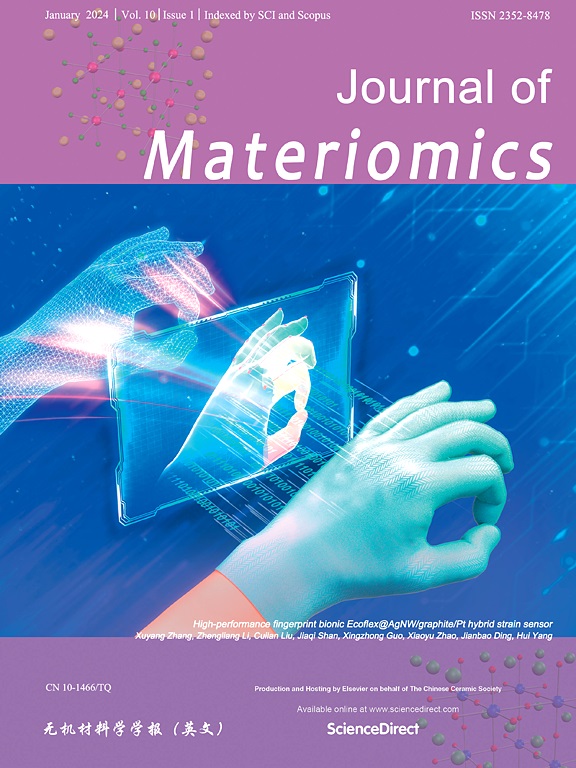No-heating deposition of ferroelectric epitaxial Hf0.5Zr0.5O2 films using a sputtering method with precise RF power density and thickness control
IF 9.6
1区 材料科学
Q1 CHEMISTRY, PHYSICAL
引用次数: 0
Abstract
The no-heating deposition of (111)-oriented epitaxial (Hf0.5Zr0.5)O2 films was successfully achieved on (111) indium tin oxide//(111) yttria-stabilized zirconia substrates using a radio-frequency (RF) magnetron sputtering method. As the RF power density was increased, the crystal phase changed sequentially from the tetragonal, the orthorhombic, and then to the monoclinic phase. A similar trend in the crystal phase was also observed with increasing film thickness. The (Hf0.5Zr0.5)O2 film exhibited ferroelectric properties comparable to the (Y0.07Hf0.93)O2 film previously produced via non-heating film deposition. Upon heat treatment at 1000 °C, the crystal phase of the film transitioned from the orthorhombic phase to the monoclinic phase, indicating that the stability of the orthorhombic phase is low compared with (Y0.07Hf0.93)O2. Therefore, precise control of the RF power density and film thickness is essential for preparing ferroelectric (Hf0.5Zr0.5)O2 films without heating.

采用精确控制射频功率密度和厚度的溅射方法无加热沉积铁电外延Hf0.5Zr0.5O2薄膜
采用射频磁控溅射方法,在(111)氧化铟锡//(111)钇稳定氧化锆衬底上成功地制备了(111)取向外延(Hf0.5Zr0.5)O2薄膜。随着射频功率密度的增大,晶相由四方相、正交相、单斜相依次变化。随着薄膜厚度的增加,晶相也有类似的变化趋势。(Hf0.5Zr0.5)O2薄膜的铁电性能与之前通过非加热膜沉积制备的(Y0.07Hf0.93)O2薄膜相当。经1000℃热处理后,膜的晶相由正交相转变为单斜相,表明与(Y0.07Hf0.93)O2相比,正交相的稳定性较低。因此,精确控制射频功率密度和薄膜厚度对于制备不加热的铁电(Hf0.5Zr0.5)O2薄膜至关重要。
本文章由计算机程序翻译,如有差异,请以英文原文为准。
求助全文
约1分钟内获得全文
求助全文
来源期刊

Journal of Materiomics
Materials Science-Metals and Alloys
CiteScore
14.30
自引率
6.40%
发文量
331
审稿时长
37 days
期刊介绍:
The Journal of Materiomics is a peer-reviewed open-access journal that aims to serve as a forum for the continuous dissemination of research within the field of materials science. It particularly emphasizes systematic studies on the relationships between composition, processing, structure, property, and performance of advanced materials. The journal is supported by the Chinese Ceramic Society and is indexed in SCIE and Scopus. It is commonly referred to as J Materiomics.
 求助内容:
求助内容: 应助结果提醒方式:
应助结果提醒方式:


